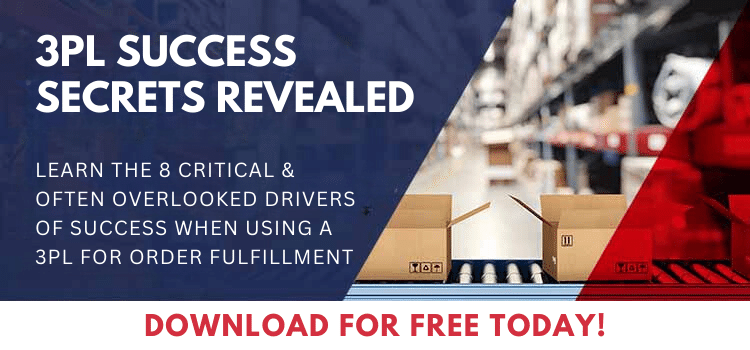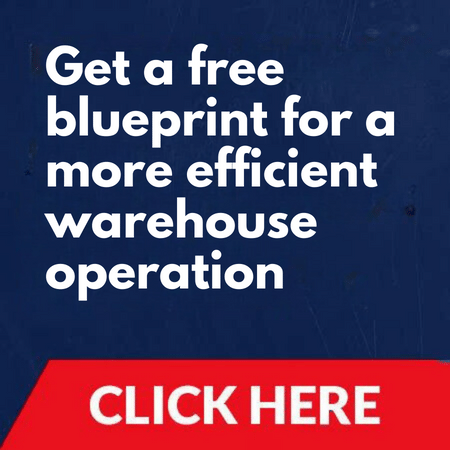For some e-commerce businesses and multichannel companies, working with a 3PL for your warehousing, fulfillment needs and supply chain management can be a cost-effective option. Within our distribution consulting services, one of the main questions we are asked is “how cost-effective is a 3PL fulfillment company compared to my internal order processing cost – are there cost savings to be recognized?”
Each business’ costs and supply chain strategy are different, and you need to provide detailed statistics and processes to the 3PL partners to receive their proposed costs for their services.
To get an accurate comparison, you need to be sure you have the fully loaded costs for both internal fulfillment and the 3PL services. The most used metric to compare the two against each other is to dial in all costs into one line, cost per order. This can be tricky and difficult sometimes if not thought about in the right way.
For example, fulfillment managers, while they approve the expenses for leases, generally don’t incorporate the lease costs into their cost-per-order thinking. This may be 15% to 20% of the fully loaded costs. They rightfully focus on costs they control and can affect, such as direct labor for picking and packing, etc. However, they may not include IT costs or allocation of management costs to the operations in the cost-per-order calculation.
In comparison, 3PL fulfillment companies generally base their invoicing on services and types of transactions (e.g., picked order and line-item charges), activities performed, and agreed-upon service levels. They are not on a fixed cost per order basis because of the variability of these contracted services (e.g., kitting).
To get an accurate comparison, it’s important to account for internal fulfillment services provided by other departments. This is important because the 3PL costs will include all costs like warehouse space and utilities; IT services, customer service, communications, and equipment; recruiting costs; benefits; management of fulfillment, and profit.
Read: 10 Steps to Developing a Successful Third-Party Fulfillment Partnership
Here are six considerations for creating a fully loaded cost per order for these options:
Order Processing Cost Analysis
The steps below are the roadmap we use as warehouse logistics consultants to get an accurate comparison between internal and 3PL costs.
- Create a business profile of the services required and transactional volumes for your business.
- Identify all costs which will make up the fully loaded cost per order for your internal fulfillment costs. Be sure to not include the outbound shipping costs with small parcel carriers etc.
- Send out a Request for Proposal (RFP) to qualified 3PL fulfillment vendors that meet your high-level criteria. Request a three-year projection of all costs by year indicating any factors used to increase services.
- Develop an accurate comparison between internal fulfillment costs and each individual 3PL service provider’s proposed costs.
The detail of this analysis is explained below. If this is not done at a low enough level, the planned internal budget and proposed 3PL costs may be understated.
3PL Fulfillment Business Profile
For 3PL fulfillment vendors to give you an accurate cost proposal, you will need to outline your business in terms of services, the expected usage, and the transactional volumes by year. We recommend a three-year time horizon that aligns with the typical contract length.
Each vendor has a questionnaire to identify services, transactions, and service levels. Here are some measures which directly affect proposed costs:
- Number of SKUs – the total active SKUs to be stored in the warehouse space, picked, and shipped.
- Number of forward picking and bulk locations by type – Total locations regardless of pallet, shelf, floor stacked for average and peak volumes
- Major transactions by month - such as number of inbound receipts, shipped orders, returns, and drop ship orders
- Order profile – unique SKUs (lines) and units per order; projected orders by month; peak and average order weeks; the number of single line and multi-line orders annually
- Reverse logistics – Projected number by month and for peak and average weeks; average units returned; percent of returns which are exchanges (creates shipped order)
- Types of value-added services – kitting, personalization, light assembly, etc.
- On hand inventory – for peak and average week in units and pallets; inventory turnover; the number of physical inventories and cycle counts annually
- Expected service levels – for orders (e.g., percent of orders taken and shipped same day); returns goals (e.g., inventory back in stock and credited to customer accounts in 48 hours)
- Shipping carriers, by plans (e.g., overnight, 2 day, etc.) and total shipped by service level
- Inventory accuracy – expected goal
- Error rates – for order picking and returns
Keep in mind you’ll need both the projected order counts and the number of shipped orders (outbound cartons shipped).
If you’re business to business, the statistics will be somewhat different. For example, you’ll want to compile the number of pallets picked and shipped as well as full case picks.
Read: Creating Your Third Party Logistics Strategy
Develop the Order Processing Cost per Order
For the internal fulfillment option, what are the expense categories you are responsible for? Typically, these include direct and indirect labor, facility costs, packing materials, etc.
What other allocations of fulfillment costs are there? What other departments provide services to operations which would no longer be incurred (e.g., IT, human resources)? Be sure to include all of these in your internal cost per order.
State in your RFP that you are doing a fully loaded cost per order analysis. Identify that you must have all expected costs that you will be invoiced for. Not all costs are transaction-driven, there will need to be costs planned for services that are invoiced on an hourly basis. Additionally, there may be surcharges for managing supplies, etc.
Incorporate Warehouse Management Overhead
One of the benefits of 3PL partners is that management can focus their time on marketing and merchandising tasks to grow the business. What part of senior management’s time is spent on currently managing fulfillment and customer service? Convert that to dollars spent. Include this expense into the fully loaded cost per order.
At the same time, what will be the salary and benefits for a person to be the liaison to the selected 3PL? Some companies may require a small team depending on the complexity and transactional volumes. Include a travel budget to periodically visit the 3PL as well.
There are other expenses managed by other departments that need to be incorporated into the cost per order. For example, IT costs for operations, programming costs expended, communications, servers used, etc.
Understand Future Order Processing Costs
- How will your budget increase in the next three years (by year) to meet order and service level goals?
- Will labor costs increase in your market?
- How will your company's benefits increase to remain competitive?
- As you negotiate with 3PLs, how will their costs increase by year? For example, agreements may factor in future costs with the consumer price index (CPI).
Thinking about your company’s growth and needs, will a 3PL’s services allow you to avoid facility expansion or a move to a new facility; or eliminate projects requiring capital expenditures for technology and automation? Include this in your comparison.
Read: How To Select The Best 3PL Companies For Your Business
Calculating Order Processing Cost per Order
You can see that getting an accurate proposal from 3PLs and understanding where there may be cost savings is not a quick or easy task.
Determining how internal costs compare to 3PL costs requires detailed projection and analyses. Without a detailed projection, you may end up understating costs.
If we can help your company with a detailed 3PL cost projection or weight 3PL fulfillment versus internal fulfillment, you can schedule a phone call with us below.









SHARE